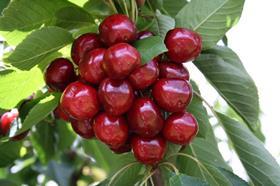
Australia’s cherry industry is reflecting on a strong 2014/15 export campaign, which saw shipments increase 30 per cent year-on-year to garner around A$47m.
Overall Australia exported almost 3,500 tonnes of cherries to a total of 31 different countries, with 90 per cent of product bound for Asian markets, according to latest figures revealed by Cherry Growers Australia.
Cherry Growers Australia’s chief executive officer Simon Boughey said Australiahas the potential to more than double its exports from 3,500 tonnes to 7,000 tonnes within the next five to seven years, citing strong demand across Asia, theMiddle East and other global markets as well as the prospect of regaining access to Russia and Vietnam.
“Australia’s strength is our proximity to the Asian region andto a range of markets by airfreight,” said Boughey. “Many bigger growers are gearing up to export more from Victoria, New South Wales and South Australia. Tasmania, with its pest-free status, also allows access to ‘protocol’ markets later in the Australian season such as China, Taiwan, South Korea and Thailand.”
Hong Kong remained the single largest export destination for Australian cherries, followed by Singapore. China’s imports increased 114 per cent year-on-year to reach 323 tonnes, which saw it overtake Taiwan as the industry’s third-largest market.
Korea was also a success story in 2014/15, with over 250 tonnes sent from Tasmania, compared to five tonnes last year. The growth was fuelled by tariff reductions under the free trade agreement (FTA) between Korea and Australia, and growers have begun expanding orchards to meet the increased demand, according to Boughey.
Beyond Tasmania, Boughey said the Australian cherry industry is being asked to supply cherries fromseveral other regions in South Australia, New South Wales and Victoria from early November into a number of markets, but he noted that market access hurdles remain.
“We are working hard to improve market access into those protocol markets via airfreight with the Federal Department of Agriculture, Horticulture Innovation Australia and state governments but the process is very slow and we need a more commercial approach to be taken to match the expectations created by the FTAs and to get back into regulated markets that were previously unregulated,” he said.
“We could have exported another 1,500 tonnes this season if we had achieved improved access into Thailand, China and Taiwan. Korea is also keen to have our cherries in there earlier in the season.”






No comments yet